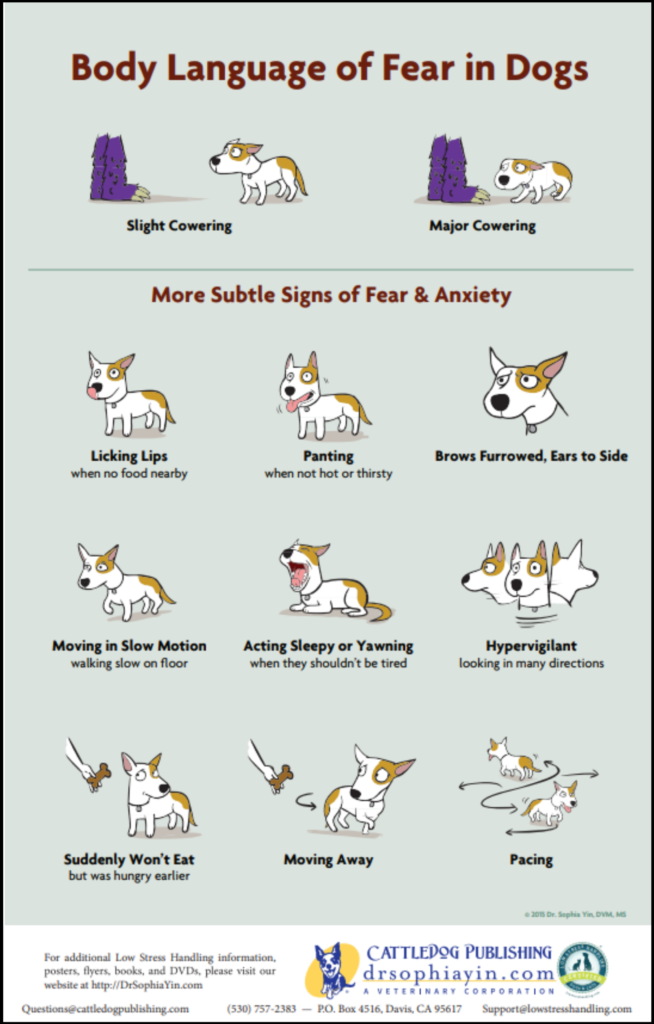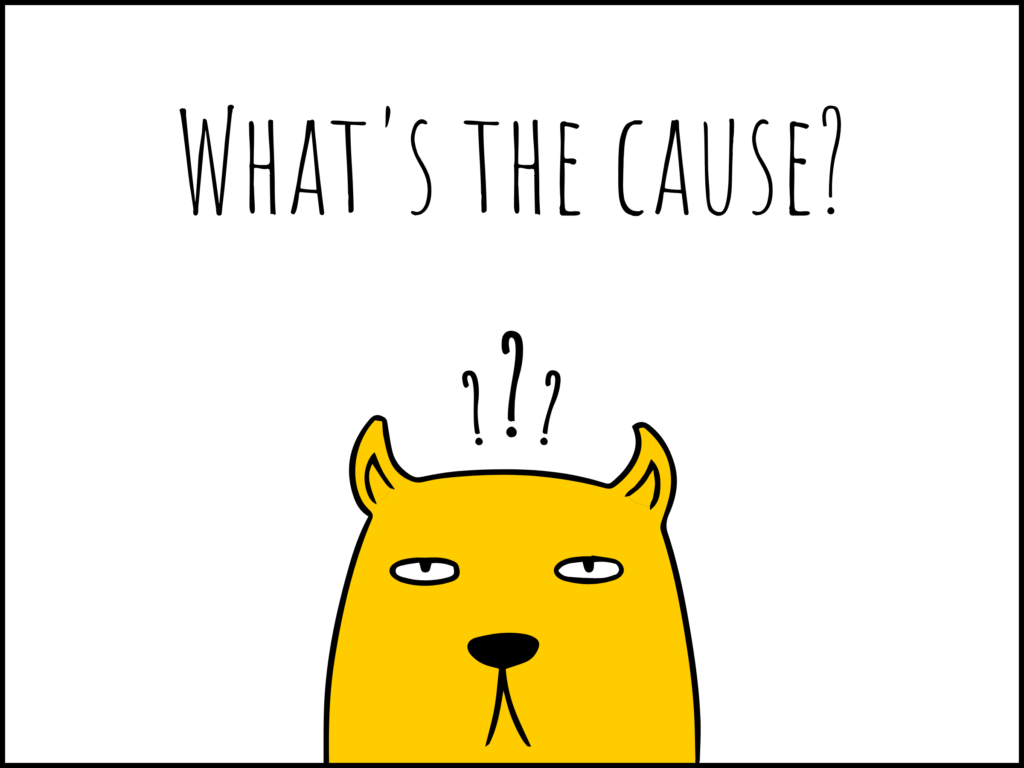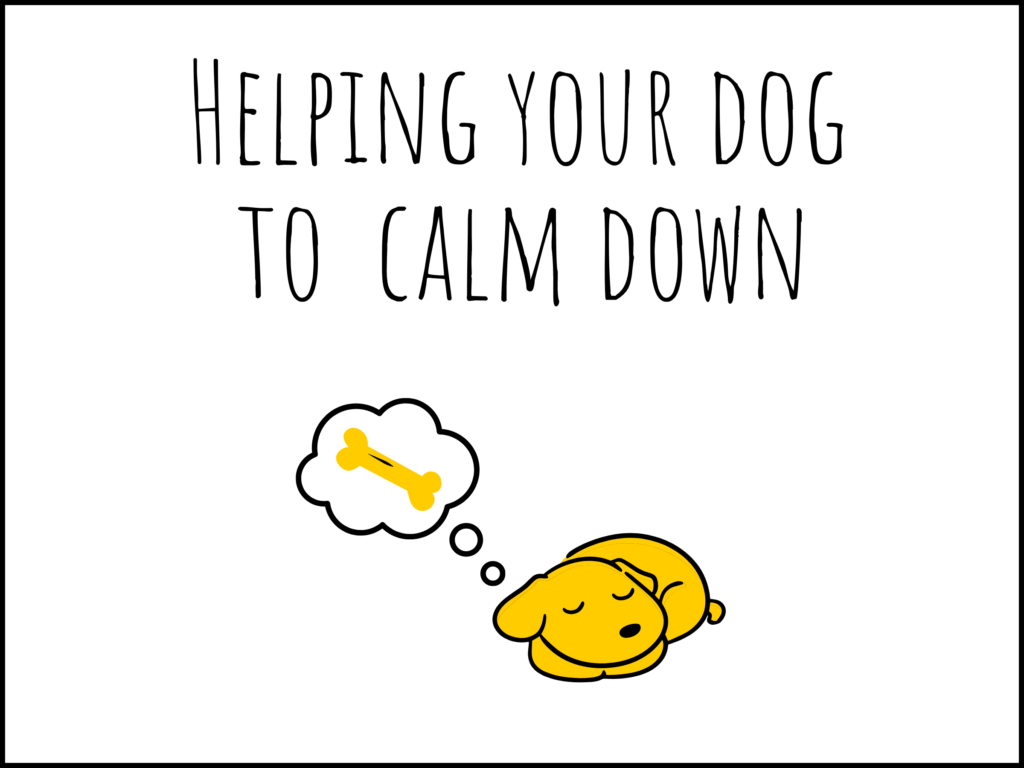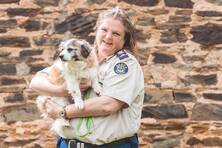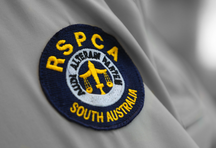
The Dog Adoption Handbook: Understanding stress
September 27, 2022For your dog, moving into your household can be a stressful experience. As we have mentioned in previous chapters, it takes time (even several months) for your new pooch to settle in and become a member of the family.
Put yourself in their shoes and imagine being permanently moved into an alien environment with complete strangers – flipping a dog’s life upside down can be overwhelming. For some dogs, it’s happened twice in a short space of time – arriving in our care and then moving into yours..
Just like people, dogs can easily become stressed when they’re placed in new or frightening situations. It is important to recognise when your dog is stressed so that you can help them calm down, and create a relaxed environment for your pup.
How can I tell if my dog is stressed?
Unfortunately, dogs don’t have verbal language like us which would make understanding what they’re saying easier! But they are great at playing charades and will share their feelings through body language. You would be amazed at how nuanced a dog’s body language actually is.
Knowing how to understand your dog’s body language, and then knowing how to respond accordingly, is a great way to manage their stress levels. Most of us are great at recognising the more obvious signs of distress and fear (baring their teeth or growling).
But there is so much more to body language than that – and if we can notice the subtler, early warning signs first your dog won’t feel the need to escalate their communication to something more obvious like growling.
Some signs of stress can be confusing or easily misinterpreted – did you know that dogs will often lick their lips as an appeasement gesture, pant when they are very stressed, or sniff the ground to help themselves de-stress?
Common signs of stress include:
- Panting when they are not hot or thirsty
- Closing their mouth completely (most relaxed dogs will have a slightly relaxed jaw where their mouth is slightly open)
- Yawning when they are not tired
- Licking their lips
- Blinking frequently
- Moving in slow motion
- Trying to move, turn, or shrink away – cowering or shifting their weight away from you
- A tense body
- Ducking their head when you try to pat them
- Showing the whites of their eyes (also known as ‘whale eye’)
- Having their ears back and/ or their tail held lower than usual
You can find more examples of a dog’s body language in the image above.
If you notice your dog exhibiting behaviour that indicates they are stressed or anxious, it is important you provide them the extra space they are asking for.
That means, you remove them from the situation that is scaring them, or change the situation (e.g. ask a person to stop approaching) so they can feel safer.
It can be valuable to chat with a qualified Force-Free trainer to help you identify the causes of their stress and to find practical solutions for helping them cope.
What is the cause of my dog’s stress?
Dogs can become stressed for many different reasons. If you have recently adopted a dog from a shelter, keep in mind that stress from that environment may take a while to leave their system – and big changes such as moving to a new home are expected to cause them some anxiety.
It is important to make sure they have a comfortable space in your house for them to decompress and to give them time to adjust to their new home. It can often take months for your dog to truly settle in, feel comfortable and start showing signs of their true personality! This means over this time you might see some new surprising behaviours from your dog that we didn’t see at the shelter – things like barking, jumping up, pulling on the lead, digging/ destructive tendencies or reacting to things in the environment are some of the behaviours that might crop up. Of course, these behaviours can also be influenced by stress and you might find they reduce over time too. Unfortunately, there is no ‘one size fits all’ answer, as behaviour and personality are complex and every dog is different. If you find unwanted behaviour increasing over time, best to get in touch with a qualified trainer to help you work through your concerns with a tailored training and management plan specific to you.
Some common stressors include:
- Rushing into social interactions too quickly
Dogs can become stressed when interacting with other dogs or people, so it is helpful to take things slow and avoid placing your dog in situations that may exacerbate the problem. This doesn’t necessarily mean that your dog doesn’t like people or other dogs, but just that it’s important to give them ample time to settle in and introduce new people and/or dogs slowly – one or two at a time over months. There is a very big difference between making a new friend or two and being thrown into the deep end at a dog park or house party. Some dogs are naturally more introverted than others; they don’t need to meet new people or play with new dogs every single day and they can live wonderfully enriched and fulfilling lives being able to chill with a few good friends. Of course, some dogs do fear interactions with new people or other dogs. If we are aware of this, we will have let you know during your adoption appointment, but sometimes these things don’t crop up in a shelter environment. If you notice your dog is showing signs of fear and stress in the presence of new people or dogs, it will be best to get some personalised coaching from a qualified trainer. These sorts of behaviours don’t tend to resolve with continued exposure without appropriate training intervention also.
- Separation or isolation distress
Some dogs experience stress when left alone. This can be because they don’t know how to feel safe when isolated, or because they have developed deep attachments to members of the family. Some symptoms of this distress include destruction around the house or an inability to settle – pacing the backyard and barking at passersbys. Management and treatment of this distress are possible, and it is important to ensure you work with your pup to reduce their fear of being left alone – learn more about how to manage separation/ isolation distress. Some isolation/ separation distress can be so extreme that it is diagnosed by a Veterinarian as Separation Anxiety. This has similar management strategies as above, but your Veterinarian may also prescribe some medications to help the dog cope.
- Rushing into unsupervised interactions with other pets at home
If you have another dog at home, it is important that you provide both dogs with time away from each other where they can relax and decompress. Feeding them separately is important to reduce the risk of stress or other negative interactions around food. Walking and training them separately can be a great way to build a relationship with your new dog, and maintain your relationship with your existing dog. Even dogs that love other dogs deserve some time away from each other, and it is quite common that while one dog is a social butterfly, the other might be slightly more introverted and need more quiet time. Of course, being happy meeting new dogs in parks is very different to living with a new dog at home. To give them the best chance of becoming best friends, be sure to give them space away from each other too.
If you have other pets in the home, ensure they have their safe rooms (with baby gates or doors) where the new dog can’t go. You may need to spend several weeks with both pets separated by doors and baby gates, before slowly introducing them on lead. Just because your cat was okay with your last dog, does not mean your cat is dog friendly, and just because your dog was okay with cats in a previous life, doesn’t mean the way he will try to interact with your cat will be suitable or enjoyable for your cat. If you are unsure about these introductions, best to contact a qualified Force Free Trainer to help you transition through the steps while keeping everyone safe.
Without recognising that your pup is stressed, it is possible for their anxiety to accumulate and lead to behaviours such as digging and destruction of property, along with other distress signs including excessive barking and attempts to escape.
How do I calm my dog down after they are stressed?
It’s always important to have patience and move at your dog’s pace. Depending on the cause of stress or fear, there are different techniques to help them feel comfortable. If possible, you should remove the stressor from your pup’s new environment, and if required seek help to manage their stress.
If at any stage you feel unsure about your next steps, are struggling to find ways to help your dog settle in, or are seeing undesirable behaviour increase, it is best you contact a qualified Force Free Trainer to help coach you through the process with a tailored training and management plan specific to your and your dog’s needs.
Reducing your dog’s stress is possible. It is important to use your dog’s body language as an indicator and to find the cause of their stress so that you are able to address it – either by yourself or with the help of a qualified Force-Free trainer. With enough love and patience, your pup will be calm and confident in no time!



